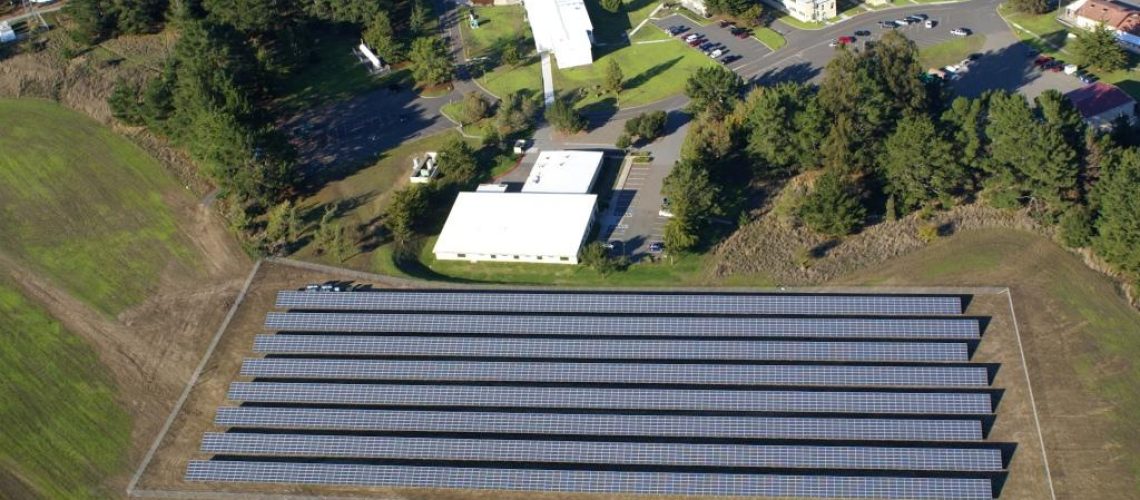Berkeley Lab examines potential negative impacts of large-scale PV projects on nearby home sale prices across six states.
A report from the Lawrence Berkeley National Laboratory (LBNL) looks at local economic impacts from large-scale photovoltaic projects (LSPVPs) on home sale prices. These LSPVPs are defined here as ground mounted PV generation facilities with at least 1 MW of DC generation capacity.
The study comprises over 1,500 LSPVPs and over 1.8 million home sales across California, Connecticut, Massachusetts, Minnesota, New Jersey, and North Carolina. Together this data represents over 50% of the installed MW capacity of LSPVP in the United States.
The analysis found that the effects of LSPVPs on home sale prices depended on many factors that are not uniform across all solar developments or all states.
As seen above, homes within 0.5 miles of a LSPVP compared to homes 2-4 miles away were found to have a reduction in home sale price of 4% in Minnesota, 5.6% in New Jersey, and 5.8% in North Carolina. No statistically significant effects were measured in California, Connecticut, and Massachusetts.
Based on data from all six states, there was a home sale price reduction of 1.5% for these homes within 0.5 miles of a LSPVP compared to those 2-4 miles away. Notably, only LSPVPs developed on previously agricultural land, or near homes in rural areas, and much larger LSPVPs were found to be linked to adverse home sale price impacts within 0.5 miles. This analysis provides precise measurements of correlations determining the precise causation of these is beyond the scope of the study. Nonetheless, a better understanding of the impacts of LSPVPs, especially in agricultural and rural areas is necessary.
In nearly every state, these impacts have contributed to local opposition. This results in delays, cancelations, and has led local governments to enact policies to restrict or block renewable energy facilities. The Sabin Center for Climate Change Law at Columbia Law School found 121 such local policies and 204 contested renewable energy facilities in a March 2022 report. This represented a 17.5% increase in local laws and a 23.6% increase in contested projects from the report’s Sept. 2021 update.
At least 20 of these contested projects related to local opposition arising from property value depreciation, among other concerns. This local opposition combined with mixed results from the Berkeley Lab report may point to the need for new strategies for rural, large, or agricultural PV installations. Compensation to neighbors, vegetative shading, setbacks, and co-location of agriculture and solar could help ameliorate negative impacts.
It should be noted this Berkeley report does not consider the ability for personal attitudes or sentiments within neighboring communities to influence property valuations. Over the long run, broader adoption of PV energy may shift these attitudes as local residents become more accustomed to seeing panels in different settings. Broader economic benefits like job creation, resilience, and tax revenue for host communities could positively impact home sale prices but was not considered in the study.
The comparative negative impact of fossil fuel factories was also not considered. For example, a 2011 study published in the Review of Economics and Statistics found that US homes within 2 miles of fossil fuel power plants opened during the 1990s experienced 3% to 7% decreases in housing values and rents, with some evidence of larger decreases within 1 mile, and for large-capacity plants. While further research is still needed on the varied impacts of LSPVPs across different projects and places, opportunities are apparent for PV stakeholders to better integrate and communicate with local communities about these tradeoffs.
The authors of the Berkeley Lab study will host a webinar covering their results on March 22nd at 12 PM Eastern / 9 AM Pacific. Register at the link below: https://lbnl.zoom.us/webinar/register/WN_7c4j1nGnRuKnvbYYmJrXyw



